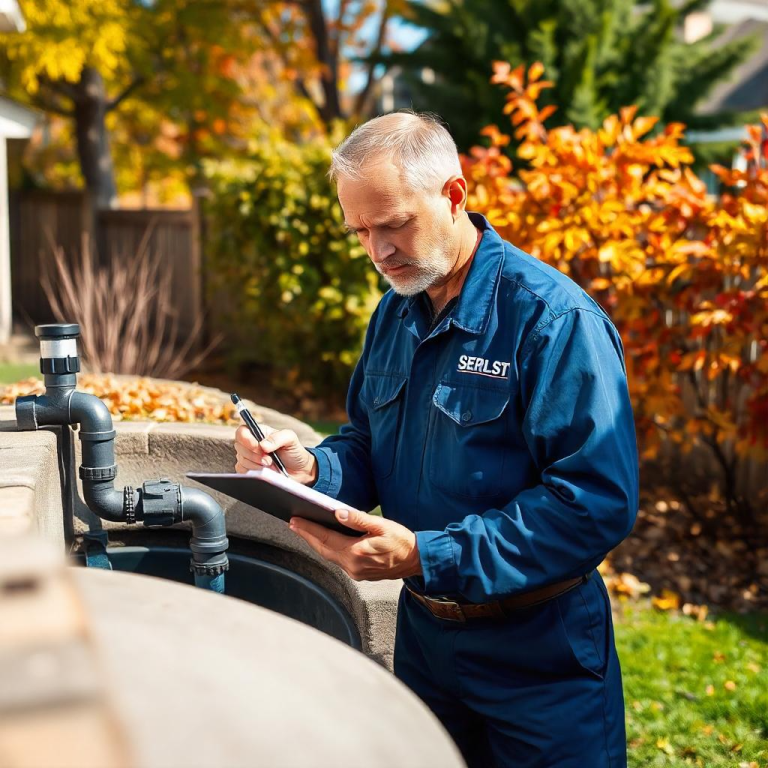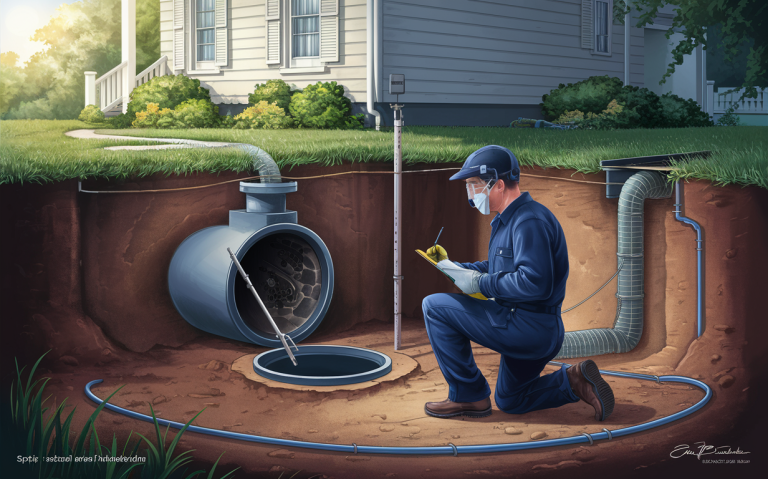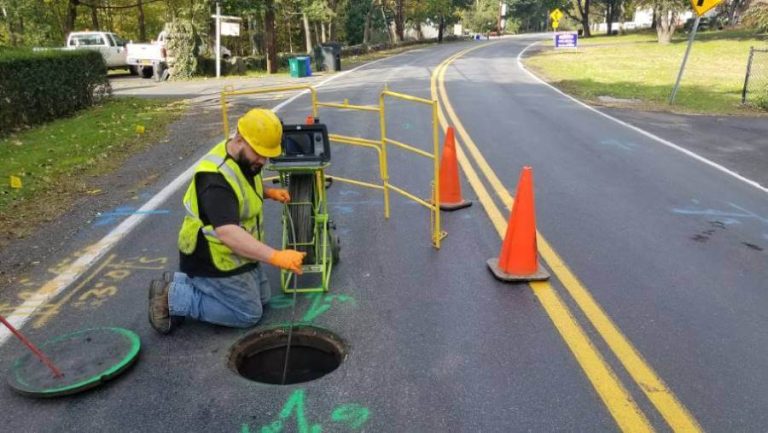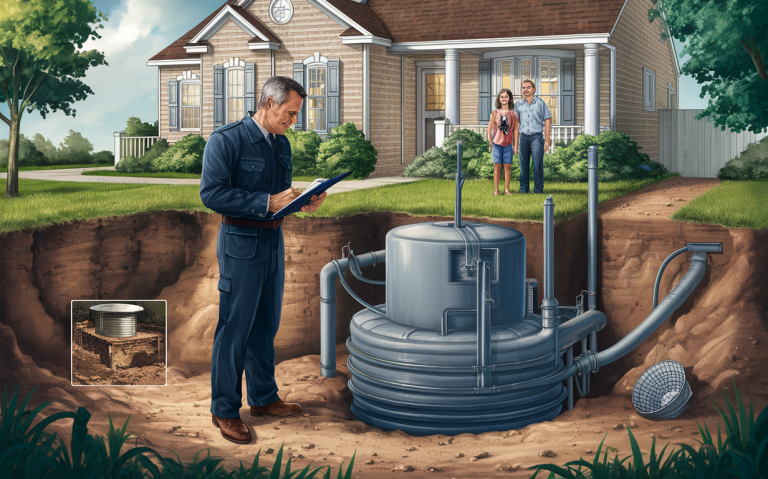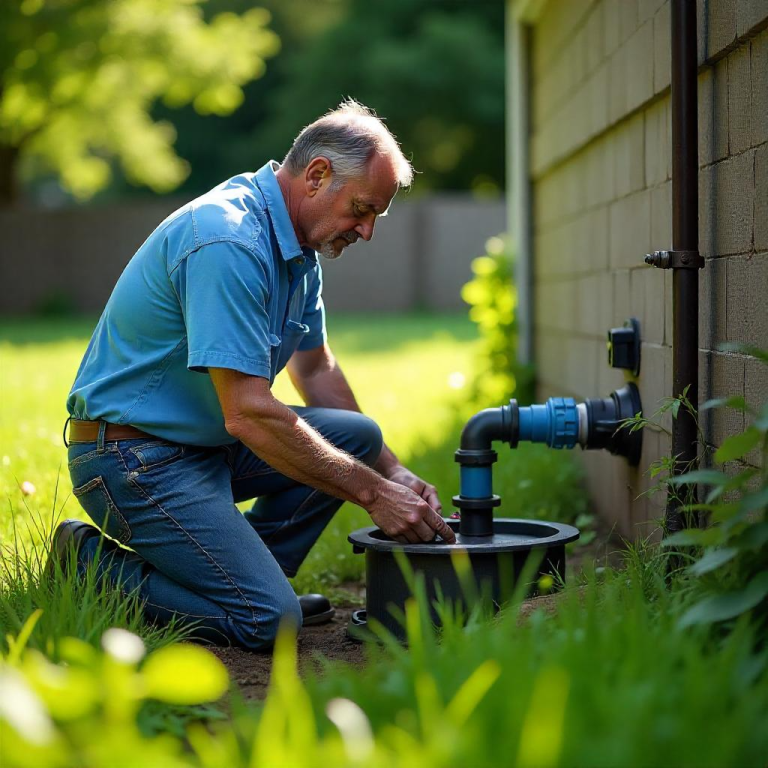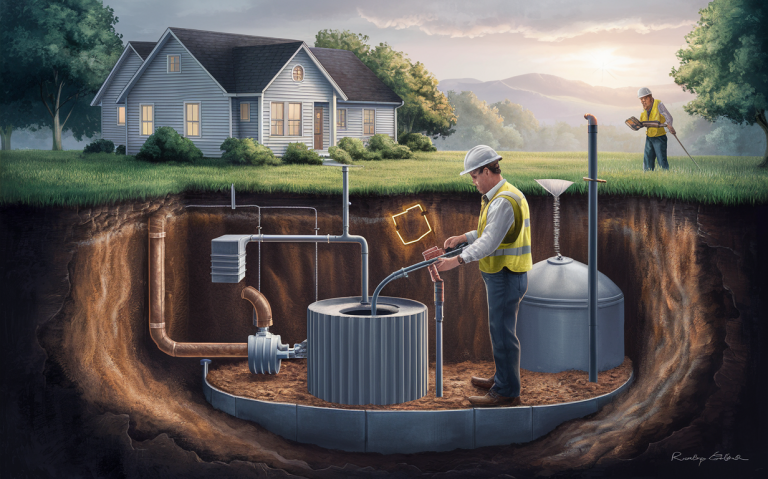Uncover Hidden Issues: Visual and Functional Septic System Inspections
When it comes to maintaining a septic system. Visual and Functional Septic System Inspections are key to ensuring everything operates smoothly. These inspections help identify potential issues before they escalate into costly repairs. Let’s dive into the significance of these inspections and how they benefit homeowners.
Table of Contents
Key Takeaways
- Visual and functional inspections are essential for the health and longevity of septic systems.
- These inspections help detect issues such as blockages, leaks, and system failures.
- Regular inspections can prevent major repair costs and ensure the optimal operation of your septic system.
Understanding Visual and Functional Septic System Inspections

A visual inspection involves a thorough check of all accessible components of a septic system. This includes the septic tank, pipes, and the drain field. The primary goal is to look for any signs of wear, damage, or potential issues that could lead to system failure.
Key Components Inspected
- Septic Tank: Checking for cracks, leaks, and sludge levels.
- Pipes: Inspecting for blockages or damage.
- Drain Field: Ensuring there is no surface pooling or unusual vegetation growth.
Functional Septic System Inspections: What To Expect
A functional inspection goes beyond just looking; it tests the operational aspects of the system. This includes water flow, pressure, and the efficiency of waste breakdown and filtering.
Functional Tests Conducted
- Water Flow Test: Ensuring water moves smoothly through the system without backups.
- Pressure Test: Checking the pressure in the pipes to ensure there are no blockages or leaks.
- Filtering Efficiency: Testing how well the system breaks down and filters waste.
Benefits of Visual and Functional Septic System Inspections
Regular Visual and Functional Septic System Inspections can save homeowners significant time and money. Here are some real-life benefits:
- Preventing Major Repairs: Early detection of issues can prevent costly repairs.
- Extending System Life: Proper maintenance extends the life of the septic system.
- Ensuring Health and Safety: Prevents contamination of the household water supply.
The Inspection Process: Step-by-Step
Understanding the inspection process can help homeowners prepare and know what to expect.
- Initial Consultation: Discuss any known issues or concerns.
- Visual Inspection: Checking all accessible components.
- Functional Tests: Conducting water flow and pressure tests.
- Reporting: Providing a detailed report of findings and recommendations.
Comparison of Visual vs. Functional Inspections
| Inspection Type | Components Checked | Tests Conducted | Common Findings |
|---|---|---|---|
| Visual Inspection | Septic tank, pipes, drain field | None | Cracks, leaks, surface pooling |
| Functional Inspection | Entire system | Water flow, pressure, filtering | Blockages, inefficiencies, system failures |
Common Issues Detected During Inspections
Regular Visual and Functional Septic System Inspections often reveal common issues that, if left unaddressed, can cause significant problems.
- Blockages: Debris and buildup can block pipes, causing backups.
- Leaks: Cracks in the tank or pipes can lead to leaks and contamination.
- System Failures: Inefficient systems can fail to break down waste properly.
Best Practices for Homeowners
To ensure your septic system remains in good condition, Visual and Functional Septic System Inspections follow these best practices:
- Schedule regular inspections (at least once a year).
- Avoid flushing non-biodegradable items.
- Use water efficiently to reduce strain on the system.
- Maintain a record of all inspections and maintenance.
How Often Should Inspections Be Conducted?
The frequency of inspections can depend on various factors, including Visual and Functional Septic System Inspections’ age and usage.
Recommended Inspection Frequency
- New Systems: Every 1-2 years.
- Older Systems: Annually or as recommended by a professional.
- High Usage Systems: More frequent inspections, depending on usage levels.
Inspection Frequency Based On System Age and Usage
| System Age | Usage Level | Recommended Frequency |
|---|---|---|
| New (0-5 years) | Normal | Every 1-2 years |
| New (0-5 years) | High | Annually |
| Older (5+ years) | Normal | Annually |
| Older (5+ years) | High | Every 6 months |
Understanding Inspection Reports
After an inspection, you’ll receive a detailed report outlining the findings and recommendations. Visual and Functional Septic System Inspections here’s what to expect:
- Summary of Findings: Overview of any issues detected.
- Detailed Observations: Specific details about each component inspected.
- Recommendations: Suggested repairs or maintenance actions.
- Photos: Visual documentation of any significant findings.
Action Steps Post-Inspection
Once you have your inspection report, follow these steps to address any issues:
- Review the Report: Understand the findings and recommendations.
- Schedule Repairs: Address any immediate repair needs.
- Plan Maintenance: Set up a maintenance schedule based on recommendations.
- Keep Records: Maintain a file of all reports and repairs for future reference.
Common Myths About Septic Inspections
There are several misconceptions about septic inspections that can lead to neglect or improper maintenance.
Myth vs. Reality
- Myth: Septic systems don’t need regular inspections.
- Reality: Regular inspections are crucial for identifying issues early.
- Myth: Only older systems need inspections.
- Reality: Both new and old systems benefit from regular checks.
- Myth: Inspections are too expensive.
- Reality: The cost of inspections is minimal compared to major repairs.
Key Signs Your Septic System Needs an Inspection
- Slow-draining sinks and tubs
- Unpleasant odors near the tank or drain field
- Pooling water or lush vegetation in the drain field area
- Gurgling sounds in the plumbing
- Frequent backups or clogs
FAQs
Q: How long does a septic inspection take? A: Typically, a visual and functional inspection can take 1-2 hours, depending on the complexity of the system.
Q: What should I do to prepare for an inspection? A: Ensure the area around the septic tank is accessible and clear any obstacles from the inspection points.
Q: Can I perform an inspection myself? A: While homeowners can perform basic checks, professional inspections are recommended for a thorough evaluation.
Conclusion
Regular visual and functional septic system inspections are a crucial part of home maintenance. They help detect potential problems early, ensuring the longevity and efficiency of your septic system. By adhering to a regular inspection schedule and addressing issues promptly, you can save money, extend the life of your system, and maintain a healthy home environment.
Feel free to visit our website or contact us for assistance.


